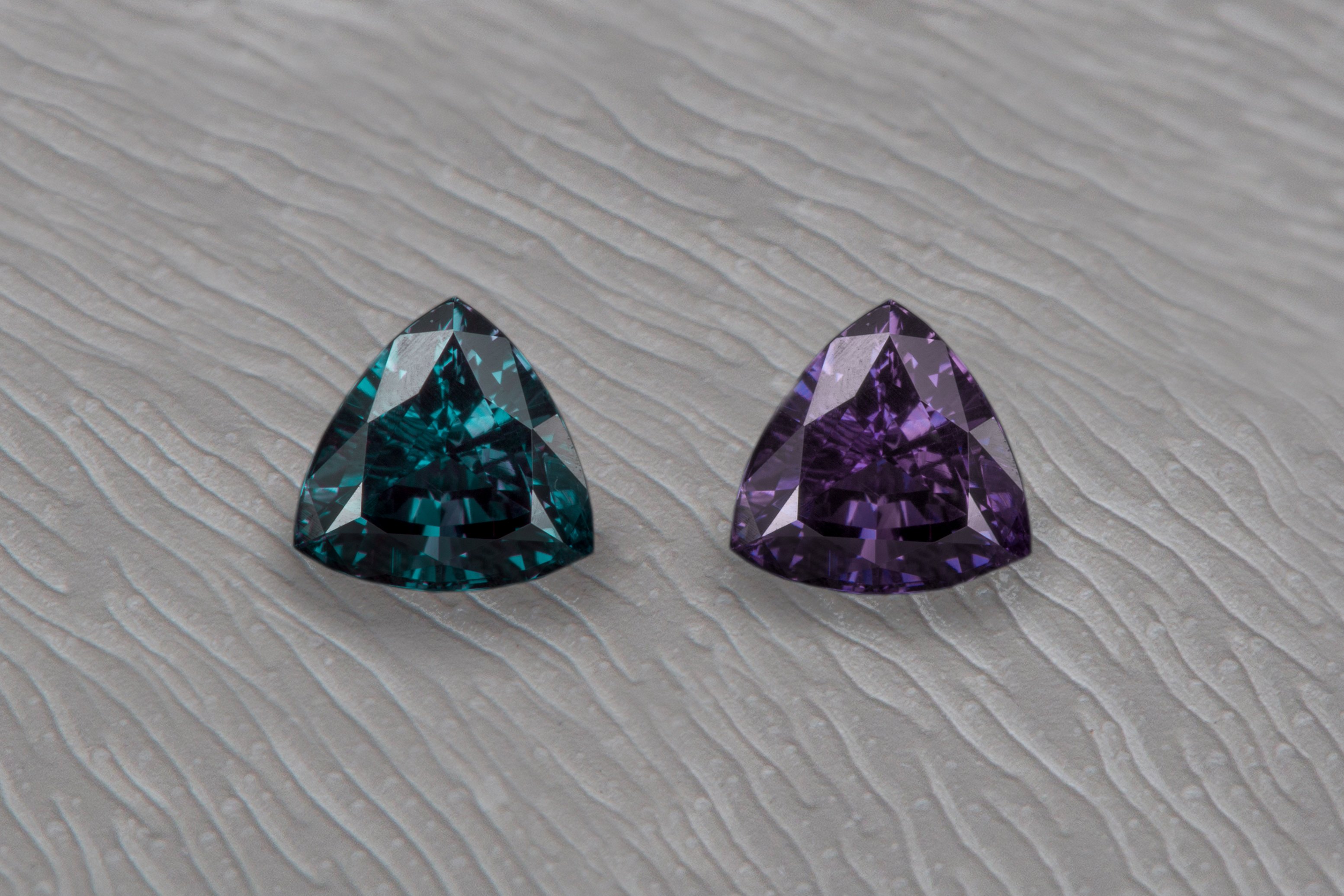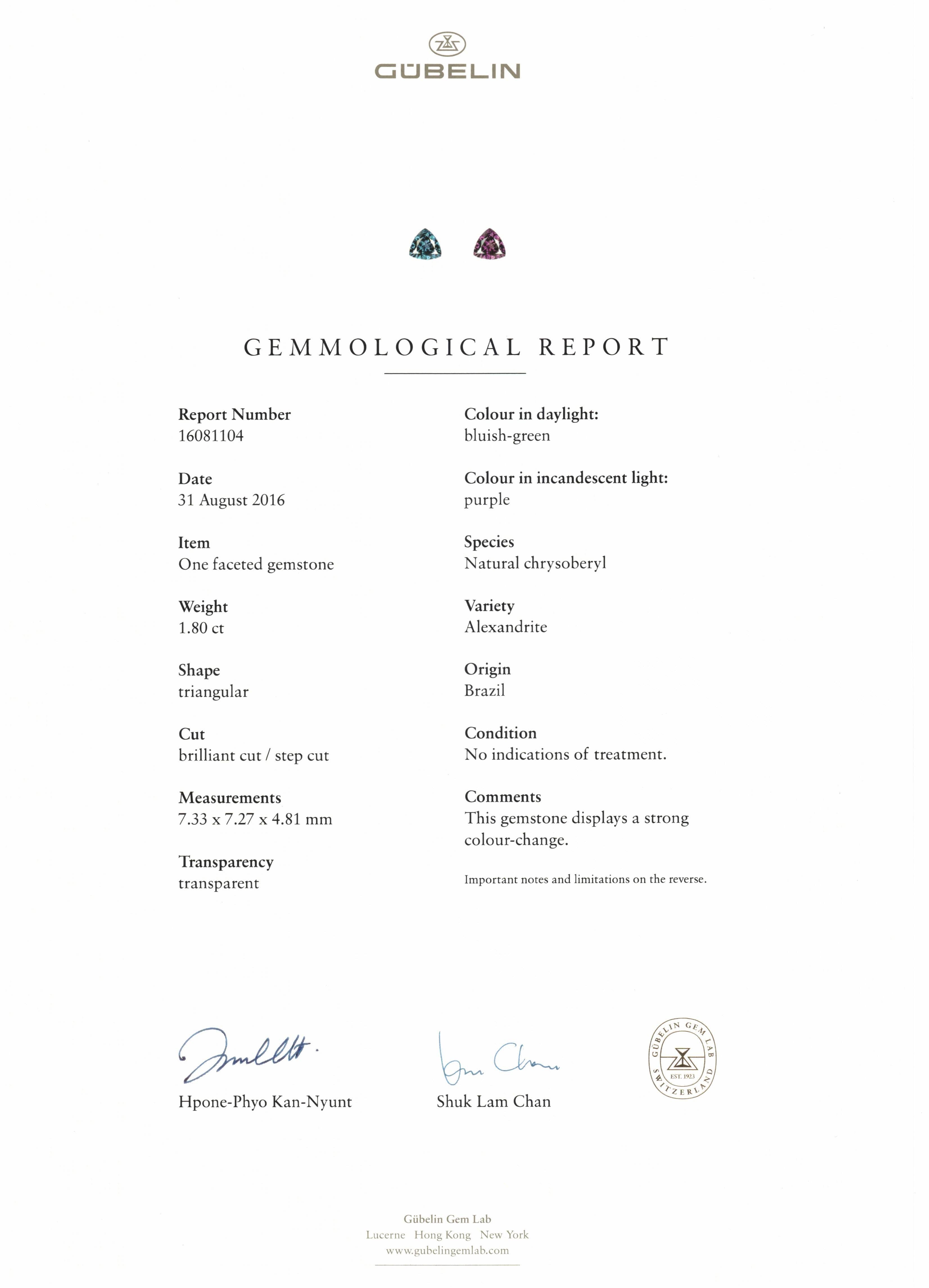




Alexandrite & Diamond Pendant
Platinum pendant accented with black rhodium featuring a 1.80 carat trillion-cut alexandrite accented by 0.32 carat total weight of round alexandrites, 0.40 carat total weight of round rose-cut diamonds and 0.04 carat total weight of round diamonds.
P1411-PC1116-ALTR
Design Details
Alexandrite & Diamond Pendant
Platinum w/ Black Rhodium
1 Alexandrite Trillion 1.80 ct. (7.33x7.27x4.81mm) - Natural
56 Alexandrite Rd 0.32 ctw. - Natural
12 Diamond Rose-Cut Rd 0.40 ctw.
7 Diamond Rd 0.04 ctw. (G+/VS+)
On 18" 18K White Gold 3-Strand Cable Chain (1.3mm)
Unique Design Traits
Unique trillion-cut alexandrite has intense, nearly 100% color-change, with report stating Brazilian origin, making it an incredibly rare gemstone.
The trillion alexandrite is surrounded by a halo of rose-cut diamonds, and further accented by a scalloped alexandrite halo to create a delicate petalled shape.
The overall size of the pendant makes it a great piece to transition from day to night.
Gemstone Details
Alexandrite
Alexandrite is one of the most unique and rare gemstones ever discovered. It is a phenomenal variety of the mineral chrysoberyl that naturally changes color from bluish green in daylight to purplish red in incandescent light. First discovered in 1830 in Czarist Russia’s Ural Mountains, the stone was named after Czar Alexander II, then heir to the throne, as its red and green hues mirrored the imperial colors of Russia. It quickly became the national stone, treasured by royalty and nobility alike. Today, Russian alexandrites are primarily found in period jewelry, as the original source produced for only a few decades before closing.
In 1987, a significant new deposit was discovered in Hematita, Brazil. Since then, Brazil has become the best-known source for alexandrite, producing many of the finest examples available on the market today. In addition, fine examples have been mined in East Africa, India, and Sri Lanka, each contributing to the gemstone’s legacy of rarity and intrigue.
The most important quality factor in valuing an alexandrite is the strength and clarity of its color change, caused by the complex way the mineral absorbs light. All else being equal, the more dramatic the transformation, the more valuable the stone. Fine-quality alexandrites over one carat are exceptionally rare.
Alexandrite is the birthstone for June and the gem of the 55th wedding anniversary.



